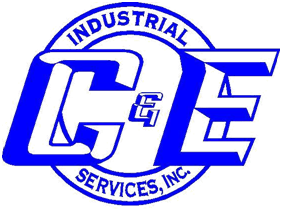
As construction projects go up, utility installation is inevitably part of the process. Whether it is residential lots, commercial sites, schools, or larger infrastructure sites, all construction projects must consider the installation of utilities to one degree or another. Installation of proper utility infrastructure will have an impact on the function and safety of the building. Before the installation of utilities, there will often need to be some form of trench digging to ensure the safety of the lines. Here’s what you need to know about utility installation and trenching. Let’s dig in!
The Basics of Trenching — It’s More Than Just a Hole in the Ground
A trench is defined as an excavation with a depth that is longer than its width. In the industry, trenching and excavating are two different types of digging. According to the U.S. Occupational Safety and Health Administration (OSHA), the depth and length of a hole determine its classification as either a trench or an excavation.
Most construction projects will require excavation or proper trenches to ensure the safe installation of utility lines, whether they are dry or wet utilities. On the surface, trenching might seem like a relatively straightforward process, but like everything in life, when you look a little closer it is more complicated and labor-intensive than first meets the eye.
Every Patch of Dirt is Different
Trench diggers must first consider the type of soil they are dealing with. OSHA has released an Excavation and Trenching Safety Guide, which clarified the new standards for excavation for general contractors and others in construction. One of the central components of the planning process involves understanding the type of soil you are dealing with. The main types of soil and rock deposits will be categorized as:
- Stable rock
- Type A Soil: Labeled a cohesive soil. Includes clay, silty clay, sandy clay, clay loam.
- Type B Soil: Typically includes angular gravel, silt, sandy loam, some silty clay loam, and sandy clay loam.
- Type C Soil: Refers to granular soils including gravel, sand, and loamy sand. It also includes submerged soil or soil from which water is freely seeping.
Why is Soil Type so Important?
Aside from building considerations, the main reason why soil classification is essential is due to safety. Understanding the type of soil on the job site allows for better pre-planning. According to the United States Department of Labor, 800 construction workers die each year while on the job, and one of the most dangerous tasks is trenching. One cubic yard of soil can weigh as much as a car or about 3,000 pounds. So a trench that caves in, can have dire consequences to anyone working nearby.
Dry vs Wet Utilities
Another key consideration when it comes to utility installation is whether you are dealing with wet or dry utilities. This will dictate the type of digging or trenching necessary for each project.
Dry utilities include:
- Gas lines
- Telephone lines
- Natural gas
- Fiber optics
- Communication lines
Wet utilities include:
- Sewer lines
- Storm drain and water system
- Water mainline
The Importance of Pre-Planning In Excavation Sites
All of this is to say that construction projects that require the installation of utilities or locating utilities already installed for further construction, will require a little digging. Any type of digging in construction is not your typical stick-a-shovel-in-the-ground type of digging. It demands careful measurements, safety precautions, and precision.
Because there are many factors to contend with on any given construction site, the importance of pre-planning for the proper digging of trenches and installation of utilities cannot be overstated. No detail can be left to chance, as that might pose a health risk or other complication or delay to the project at hand.
The Complexities of Utility Excavation
The process of utility excavation goes far beyond simple ditch digging. The process is complex and requires the utmost precision while coordinating several factors and data points. The process requires the coordination of precise locations and the elevation from the surfaces in adherence to government code and regulation. At the same time, workers must avoid conflicts with other utilities in the construction process.
Underground utility excavation poses serious hazards for work crews, given the need to be precise in the digging or locating of utility lines (if they exist). If there are already buried utility lines, potholing must occur in order to find the underground line. Investigating buried utility lines is essential.
It’s important to note the following:
- The depth of the current line
- Position
- What type of line it is
- If the line has suffered any damage
Get Precise Excavation with C&E Industrial
One of our many services is providing the El Paso region with quality excavation and site work. We take precision seriously and know how important safety and quality are on any type of construction-related job.
Chat with one of our reps today and find out how C&E can ensure your commercial construction project goes off without a glitch.


